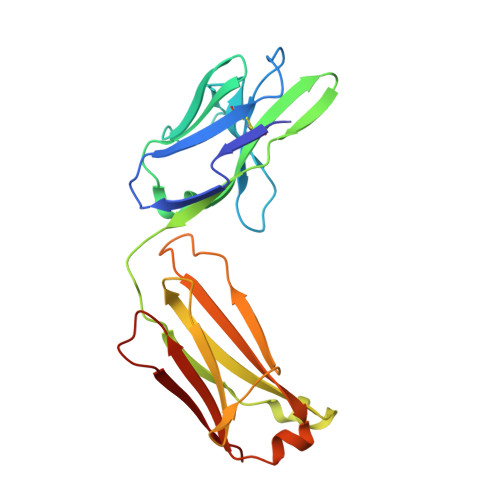Role of Non-local Interactions between CDR Loops in Binding Affinity of MR78 Antibody to Marburg Virus Glycoprotein.
Sangha, A.K., Dong, J., Williamson, L., Hashiguchi, T., Saphire, E.O., Crowe, J.E., Meiler, J.(2017) Structure 25: 1820-1828.e2
- PubMed: 29153506
- DOI: https://doi.org/10.1016/j.str.2017.10.005
- Primary Citation of Related Structures:
5JRP, 5WEQ - PubMed Abstract:
An atomic-detail model of the Marburg virus glycoprotein in complex with a neutralizing human monoclonal antibody designated MR78 was constructed using Phenix.Rosetta starting from a 3.6Å crystallographic density map. The Asp at T6 in the HCDR3's bulged torso cannot form the canonical salt bridge as position T2 lacks an Arg or Lys residue. It instead engages in a hydrogen bond interaction with a Tyr contributed by the HCDR1 loop. This inter-CDR loop interaction stabilizes the bulged conformation needed for binding to the viral glycoprotein: a Tyr to Phe mutant displays a binding affinity reduced by a factor of at least 10. We found that 5% of a database of 465 million human antibody sequences has the same residues at T2 and T6 positions in HCDR3 and Tyr in HCDR1 that could potentially form this Asp-Tyr interaction, and that this interaction might contribute to a non-canonical bulged torso conformation.
Organizational Affiliation:
Department of Chemistry, Vanderbilt University, Nashville, TN 37235, USA; Center for Structural Biology, Vanderbilt University, Nashville, TN 37235, USA.
















